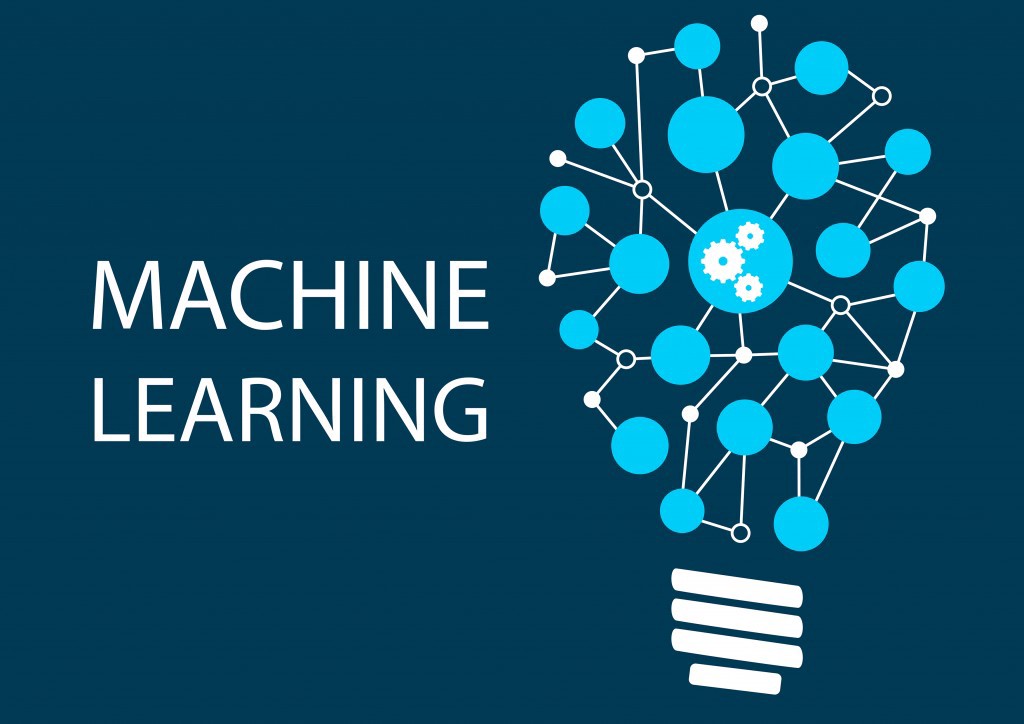A lot of people are still unaware of the exciting new world of Machine Learning and the exponential growth in its adoption to transform the world. The term Machine Learning might not mean much to you because when you hear it, you might imagine a computer playing chess, or maybe a robot bringing you food. And people usually believe that all these kinds of automated contraptions are far-off in the future, but they are actually not. They are here today and are considerably shaping our lives, work, and communication. In fact, they might even have a part in how you came across this article.
If you want to make your career in Machine Learning technology for changing the world around you, then Intellipaat is one of the best options of Machine Learning online course for you.
So, what is Machine Learning?
Before we begin, let us take a quick trip through time to review some pieces of machine learning history.
In 1950s, Arthur Samuel of IBM developed the first computer game program, that claimed to beat the checkers world champion. His design included a scoring function which measured the chances of winning for each side. The program chose its moves using minimax strategy. Arthur designed many mechanisms allowing his program to work better. In what Samuel called rote learning, the program remembered all positions it had already seen and combined this with values of reward function. Arthur Samuel first came up with the phrase “Machine Learning” in 1952.
Around the same time, Frank Rosenblatt combined Donald Hebb’s model of brain cell interaction with Arthur Samuel’s Machine Learning efforts and invented the Perceptron. Although it seemed promising, it could not recognize many kinds of visual patterns, like faces. This led to further struggles in Machine Learning researches.
In the 1960s, it was discovered that using more layers in the perceptron would offer more processing power. This led to feedforward neural networks and backpropagation. Backpropagation allows a network to adjust its hidden layers of neurons to adapt to new situations. It is now used to train deep neural networks. Artificial Neural Network (ANN) is a primary tool used for Machine Learning that has hidden layers used to respond to complicated tasks. Neural networks use input/output and hidden layers to transform data. Because neural networks can be time-consuming and resource-intensive, there are companies out there that offer deep learning model serving for enterprises that can’t manage it in-house.
90s was a golden era for machine learning. During this decade there were significant contributions to the field. In addition to the developments made on algorithm side, hardware and technology were also improving drastically. The progress continued to the 21st century as we witnessed several beautiful scientific contributions to AI and ML, such as the concept of Deep Learning.
Coming back to “What is Machine learning” – It is an element of Artificial Intelligence, whereby a computer is programmed with self-teaching abilities and to improve its performance of a specific task, with learning. Machine learning is all about analyzing big data – the automatic extraction of information and using it to make predictions, deciding whether the prediction is correct or not and learning from these experiences to make more accurate predictions in the future.
Machine Learning is not just another buzzword. Unlike many other hyped technologies, machine learning is not going away, probably ever, because it has its roots in so many important fields. It is literally changing the world by transforming many domains around us including healthcare services, education, transportation, food, entertainment, businesses and many more. For a clearer picture, let us get into the details of different transformations that are a result of machine learning techniques-
- Startups building on machine learning.
Companies are creating powerful experiences with machine learning. Some examples of such companies are listed below-
- Forkable, a food ordering website, uses machine learning and figures out what you want for lunch and delivers it automatically.
- Dark Trace, the world’s leading AI company for cybersecurity, listens to your company’s network traffic and uses machine learning to detect emerging security threats to your company.
- Nova, a platform for outbound sales, uses machine learning to record which emails performed better for you. Using these records it writes personalized sales emails and also suggests changes to your sales emails.
- Blue River Technology, a company that creates equipment for farmers, uses machine learning and computer vision to diagnose and treat each plant individually.
- Financial Sector
Many finance companies are already taking advantage of Machine Learning. Financial services’ execs take machine learning very seriously for a bunch of good reasons-
- Reduced operational costs
- Increased revenues
- Better compliance
- Reinforced security
There is a wide range of machine learning algorithms and tools that fit great with financial data. Process automation is one of the most important applications of machine learning for the finance department. It allows in replacing a lot of manual work, automating repetitive tasks, and increasing productivity. Here are some examples of process automation in banking-
- JPMorgan Chase launched a Contract Intelligence platform that leverages Natural Language Processing, which is one of the machine learning techniques. It processes legal documents and extracts essential data from them. This solution reduces a lot of manual work and saves time.
- BNY Mello integrated process automation in their system and it was responsible for $300,000 annual savings.
- Wells Fargo uses an AI-driven chatbot through Facebook Messenger to communicate with users and provide them assistance with their accounts.
- Healthcare
The value of machine learning in healthcare is huge because of its ability to process large datasets that is beyond human capability and converting analysis of that data into clinical insights. This helps physicians to plan and provide better and quick healthcare ultimately leading to better outcomes, lower costs, and increased patient satisfaction. Here are some real-world examples of machine learning in healthcare-
- Google has developed a machine learning algorithm to aid the identification of cancerous tumors on mammograms. The company has also been using the power of computer-based reasoning to detect cancer and train the tool to look for cell patterns in slides of tissue, the same way a doctor’s brain might work. New findings show that this approach has achieved 89 percent accuracy, beyond the 73 percent score of a human pathologist.
- Stanford is using Deep Learning (a subfield of machine learning) algorithm to identify skin cancer. This algorithm gives you an option to receive a diagnosis through your smartphone. Computer scientists at Stanford made a database of nearly 130,000 skin disease images and trained their algorithm to visually diagnose potential cancer. From the very first test, it performed with great accuracy. The product was tested against 21 board-certified dermatologists and the algorithm matched the performance of the dermatologists.
- Transportation
Machine learning has a lot to offer when it comes to monitoring transportation infrastructure for ways to optimize roads and public transportation or predicting the needs of vehicles. Here are some domains that are being revolutionized by machine learning-
- Self-driving cars were science fiction until now. But companies like Uber, Google, Tesla, Ford, and General Motors are escalating their efforts to widely release self-driving cars over the next 5 years. The self-driven cars are trained with machine vision techniques like Convolutional Neural Networks to recognize the road and obstacles as well as react to hazards like cars in other lanes and pedestrians.
- Predicting bridge failures: In 2007, the Interstate 35 West bridge in downtown Minneapolis collapsed, which killed around 13 people. Using machine learning techniques, we can prevent hazards like this by detecting structural defects using ultrasound images as well as predicting bridge failures based on historical data of usage and maintenance.
- Public Transportation Optimization: Machine learning techniques can be used to accurately predict the time of bus arrivals based on real-time bus position data and factors like congestion, operational delays, as well as the time taken to load passengers at different stops. Researchers have shown that a combination of clustering analysis and Kalman filtering can lead to accurately predicted times of arrival.
What does this all mean?
With so many companies indulging with machine learning, this trending branch of AI will inevitably continue to impact them positively. Healthcare, agriculture, transaportation, consumer experiences are the sectors to be on the lookout for, in the coming years as more and more tech companies enter these fields.
Nowadays, implementing Machine learning into their business is essential for companies seeking to optimize their marketing. The technology can help sort through large datasets, categorize them and make marketing suggestions based on that information. Also, it makes the marketing experience more targeted and personalized to consumers. This ensures that right products and services are advertised to right people.
With AI marketing tools available at their disposal, companies are now revamping traditional marketing techniques and databases in exchange for advanced analytics and data-processing technologies which will increase their consumer traffic and boost ROI, in the long run.
In a nutshell, the impact of machine learning will continue to stir the world’s imagination. It is a force that can help resolve issues that were considered impossible by our world leaders. Machine learning techniques have made drastic improvements in just a few years, allowing people to get things done more quickly and efficiently. Since machine learning is making a rapid foray in today’s world, in the very close future we can expect it to be everywhere around us, transforming our lives for good.
Now It’s Your Turn
What are your thoughts on Machine learning influencing the world? What according to you are factors that led to the enormous growth in AI and Machine learning? How deep do you think Machine learning will go into our lives in the future? Do you have any tips or additional comments?
More information :
- Yi Tan, Guo-Ji Zhang (Aug,2005) The application of machine learning algorithm in underwriting process. In 2005 International Conference on Machine Learning and Cybernetics. IEEE.
- Arpita Nayak, Kaustubh Dutta (June 2017) Impacts of machine learning and artificial intelligence on mankind. In 2017 International Conference on Intelligent Computing and Control (I2C2). IEEE.
Author Bio
Disha works as a technical content writer for edureka. She is a tech enthusiast who likes writing about different technologies and career trends. She is an expert in SEO, Software Testing and Artificial Intelligence.






